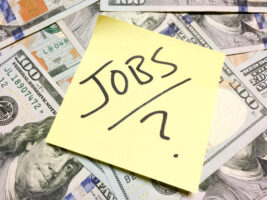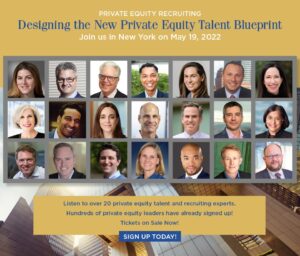Job Cut Plans are Rising Amid Inflationary Risks

May 5, 2022 – The Labor Department reported that 200,000 Americans have filed new claims for state unemployment benefits, an increase of 19,000 from the previous week’s revised level. The previous week’s level was revised up by 1,000 from 180,000 to 181,000. The four-week moving average was 188,000, an increase of 8,000 from the previous week’s revised average. The previous week’s average was revised up by 250 from 179,750 to 180,000.
The advance seasonally adjusted insured unemployment rate was 1.0 percent for the week ending April 23, unchanged from the previous week’s unrevised rate. The advance number for seasonally adjusted insured unemployment during the week was 1,384,000, a decrease of 19,000 from the previous week’s revised level. This is the lowest level for insured unemployment since January 17, 1970 when it was 1,371,000. The previous week’s level was revised down by 5,000 from 1,408,000 to 1,403,000. The four-week moving average was 1,417,000, a decrease of 36,250 from the previous week’s revised average. This is the lowest level for this average since February 21, 1970 when it was 1,409,750. The previous week’s average was revised down by 1,750 from 1,455,000 to 1,453,250.

The government is expected to report on Friday that nonfarm payrolls increased by 391,000 jobs in April after rising 431,000 in March, according to a Reuters survey of economists. Job growth has exceeded 400,000 for 11 straight months.
“Let’s just say that this was the softest report since employment came off the pandemic/lockdown low in April 2020,” said David Rosenberg, president and chief economist of Rosenberg Research. “The small business sector is the leading indicator at turning points because it is in the weeds, at the ground level, when it comes to identifying what is really happening in the economy,”
“With job openings and quits at a record high, employers will keep layoffs to a minimum. Even as the economy slows in response to high inflation and rising interest rates, we expect employers will be more likely to slow the pace of hiring than to let go of workers,” economists with Oxford Economics said.
“The labor market appears to be moving past the pandemic, rapidly closing in on a complete recovery,” Rubeela Farooqi, chief U.S. economist at High Frequency Economics, wrote in a note. “Even as the labor market is tight, suggesting optimism about economic conditions, a four-decade high in prices is tempering expectations. Even as consumer balance sheets are healthy and virus concerns are fading, there are downside risks that could weigh on household and economic activity more broadly going forward.”
“Labor markets around the world are looking strong for Q2, with hiring outlooks back at pre-pandemic levels in most countries,” said Jonas Prising, chairman and CEO of ManpowerGroup. “Any impact of the Ukraine crisis is not reflected in employer hiring intentions. While Poland and neighboring countries are dealing with the humanitarian crisis, we must be poised to help resettlement and employment efforts for refugees, adapting roles and requirements to fill vacancies and create new opportunities.”
Job Cuts
A separate report from global outplacement firm Challenger, Gray & Christmas on Thursday showed job cuts announced by U.S.-based companies increased 14 percent to 24,286 in April. The second straight monthly increase in layoffs was led by the leisure and hospitality industry.
 Working from Home and Adjusting to the New Normal for Businesses
Working from Home and Adjusting to the New Normal for Businesses
Remote work is perhaps the most significant change to the world of work brought about by the pandemic. Yet too few businesses have adjusted—or even considered—their culture accordingly, says Alyssa Gruber of Hudson Gate Partners in a new report.
“Job cut plans appear to be on the rise, particularly as companies assess market conditions, inflationary risks, and capital spending,” said Andrew Challenger, senior vice president at Challenger, Gray & Christmas. “Workers who are being cut will have lots of opportunities and will likely land quickly.”
The rise in layoffs was in sync with the ADP National Employment report on Wednesday, which in April showed the smallest private payrolls gain in two years as employment at businesses with less than 50 workers fell. The leisure and hospitality sector added the fewest jobs since late 2020.
Related: Major Paradigm Shifts Coming Out of the Coronavirus Crisis
Contributed by Scott A. Scanlon, Editor-in-Chief; Dale M. Zupsansky, Managing Editor; and Stephen Sawicki, Managing Editor – Hunt Scanlon Media











